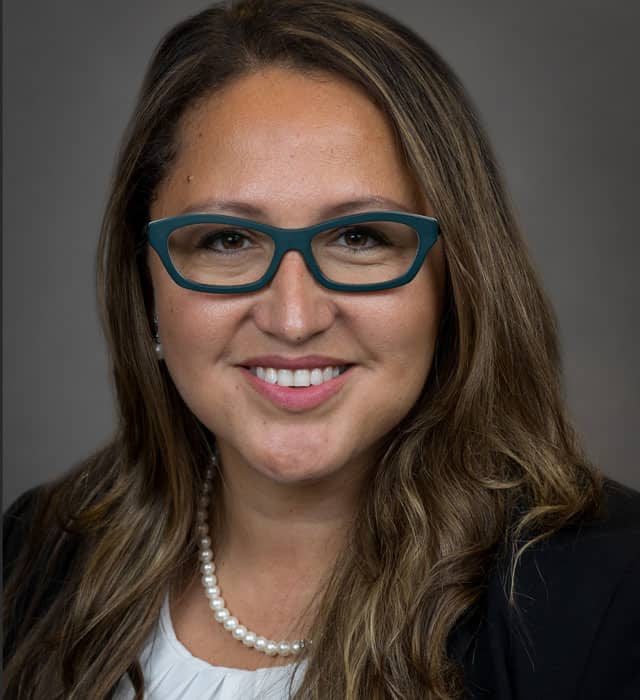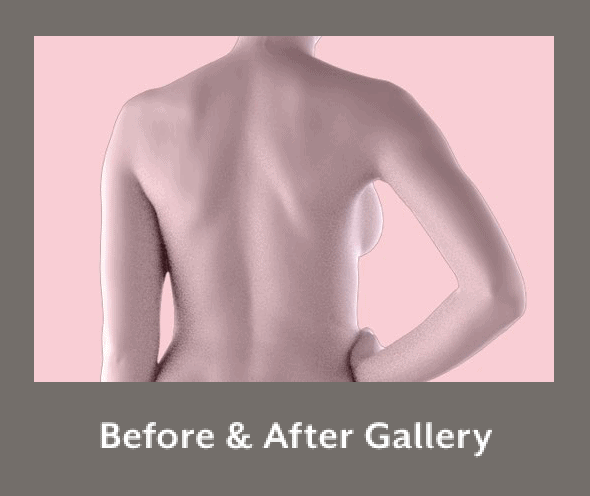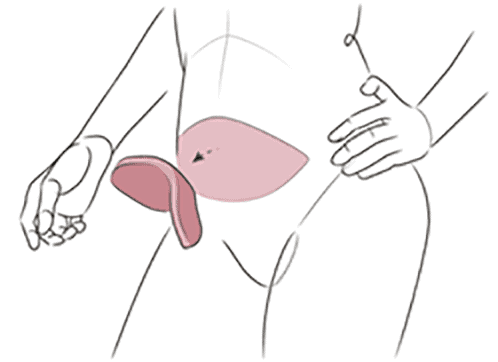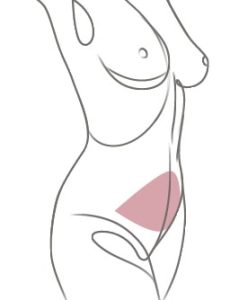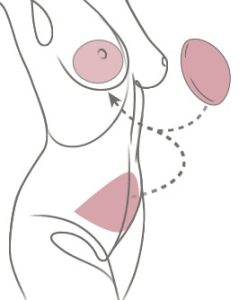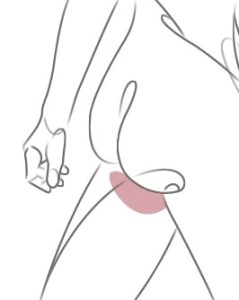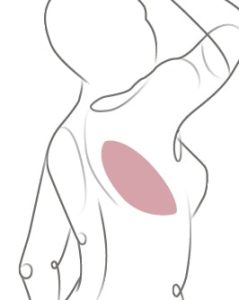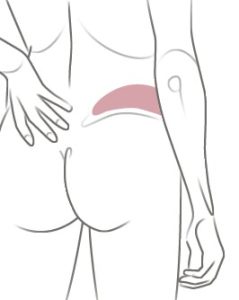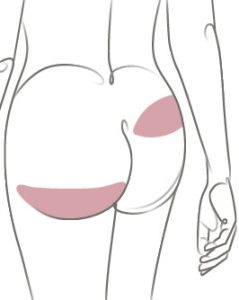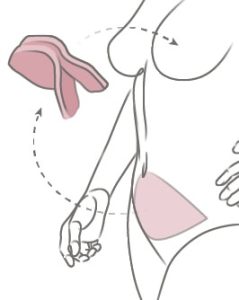About Breast Reconstruction » Natural Tissue (Flap) Reconstruction » Alternative Tissue Sites » Buttock Flap (IGAP/SGAP)
Buttock Flap Procedures
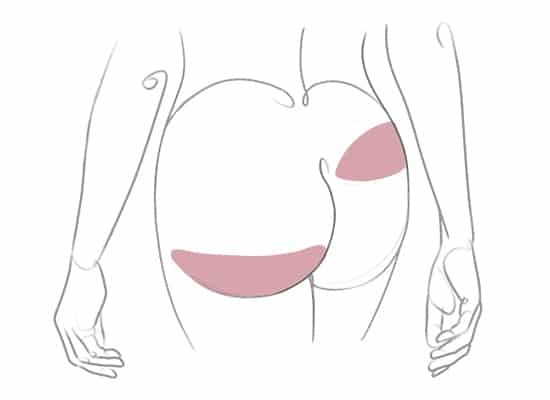
On this page

On this page
The abdominal donor site is usually favored for natural tissue breast reconstruction, but there can be good reasons (such as lack of abdominal fat or previous abdominal surgery) for using alternative tissue donor sites, such as the thigh, buttock, or back.
If the thigh can’t be used, the buttock may be a good choice as a donor site. The GAP flap (gluteal artery perforator) procedure uses excess skin and fatty tissue from the buttocks to reconstruct the breast. Two types of flaps are made from gluteal (buttock) tissue: the SGAP and the IGAP.
Procedure
The SGAP (superior gluteal artery perforator) flap takes tissue from near the top of the buttock. The IGAP (inferior gluteal artery perforator) flap removes tissue from the base of the buttock, near the crease. In both the SGAP and IGAP procedures, perforator blood vessels are removed through small incisions made in the gluteal muscle. This is similar to the way perforator vessels are removed through abdominal muscles in the DIEP flap procedure. Muscle doesn’t need to be removed from the donor site, so the SGAP and IGAP are considered muscle-preserving procedures.
When the tissue flap has been removed from the buttock, the incision is closed and the patient is turned over onto her back. The tissue flap is then surgically attached to the chest wall. The tiny perforator vessels must be connected to vessels in the chest using microsurgery, and the flap is then formed into a new breast. GAP procedures are technically demanding, in part because gluteal tissue is dense and more difficult to shape into a natural-looking breast than tissue from the abdomen or inner thigh. These procedures require the skills of a highly specialized and experienced microsurgeon.
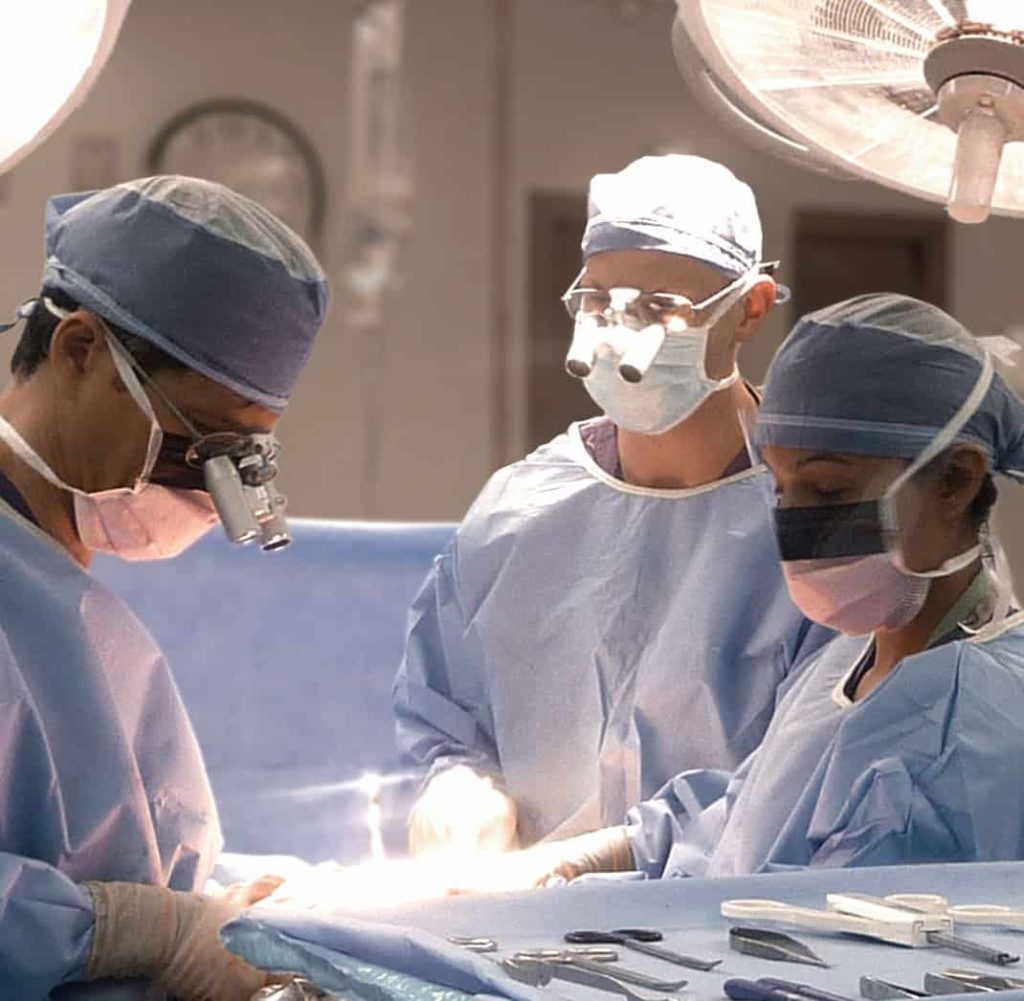
Your Recovery
Recovery Time
The usual hospital stay for a buttock flap procedure is 1-3 days.
Sitting will probably be uncomfortable for at least a week. You’ll be able to return to most activities after 6-8 weeks.
It can take up a year for your tissue to completely heal.
Expect to Feel
Expect soreness, swelling, and bruising at all surgery sites, including the buttock. You might experience some loss of sensation, which is often temporary at the donor tissue site.
Scarring
The buttock incision for the SGAP flap procedure is located near the top of the buttock. The buttock incision for the IGAP flap procedure is located at the base of the buttock, near or in the crease. In either case, scars are usually covered by most undergarments and swimsuits.
Scars typically fade over 12-18 months. Your breast scars will largely depend on the type of mastectomy you end up having.
Additional Procedures
Additional cosmetic procedures, such as nipple and areola reconstruction, may be done to enhance the appearance of the new breast.
If you’re having only one GAP operation done to construct one new breast, it’s likely to result in asymmetrical buttocks. Liposuction or other procedures may be needed to make your buttocks look more alike.
Removal of tissue from the buttock usually results in a tightening effect in the buttock but may leave a contour depression that is visible in undergarments or swimsuits. Procedures such as fat grafting can help fill in any contour irregularities.
Things to Consider
- In deciding whether the SGAP or the IGAP is the best choice for you, your surgeon will consider the shape of your buttock, the desired size and shape of the new breast, your preferences for the resulting shape of the buttock, and other factors. Talk with your surgeon about your preferences.
- The SGAP flap may be preferred over the IGAP because the IGAP incision is made at the portion of the buttock that bears weight during sitting. Because fat is removed from that area, it may become uncomfortable to sit, and the tissue over the “sit bones” of the pelvis may break down over time.
Contraindications and Alternatives
If you’ve had prior abdominal surgery, you may not be a candidate for a DIEP flap. Your doctor can evaluate this during your consultation. If your abdomen can’t be used as the donor site, alternative sites, such as your thighs, buttocks or back, may be considered. Or, an implant may be used instead of fat.
Women who have little abdominal fat may be candidates for a stacked flap procedure, a hybrid flap-implant procedure, or a flap from another donor site.




















